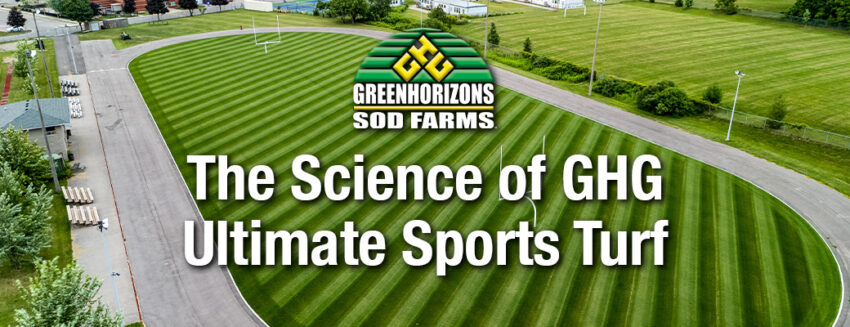When it comes to professional-grade sports turf, Greenhorizons Ultimate Sports Field Turf stands above the rest. Developed using Greenhorizons Sod Farms’ Leading Edge Turfgrass Technology, this premium Kentucky Bluegrass blend is the result of years of research and testing.
With over 6 million Canadians participating in organized sports annually, field quality isn’t just about aesthetics… It’s about safety. A 2023 paper published in the Scandinavian Journal of Medicine concluded that “the incidence rate of traumatic injury is increased with drier field conditions and advanced [soccer] tournament stages” (Scand J Med Sci Sports, 2023). It might seem obvious, but from this conclusion, we can infer that the quality of any sports field is crucial in reducing the number of injuries that occur during field sports.
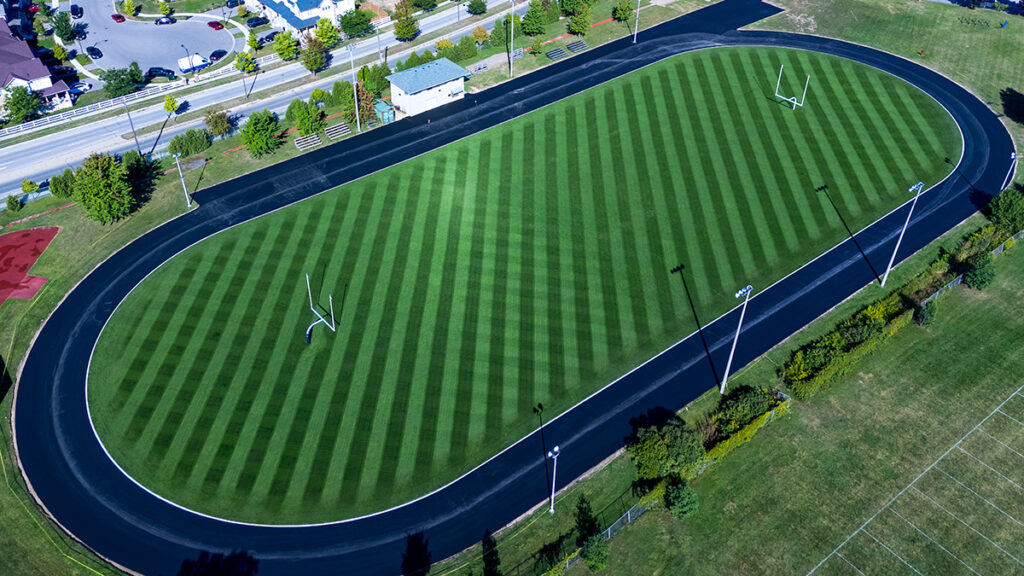
So, the higher the quality of the field, the lower the risk of injury is! Here at Greenhorizons, we’ve known this fact for a long time. Since our inception in 1975, we’ve been consistent advocates for high-quality natural turfgrass, especially for sports turf playing surfaces. Injury reduction is key, but it’s only one of the many benefits of using high-quality natural turfgrass for playing surfaces.
On top of injury reduction, aesthetic beauty, fair play, and the natural cooling effect of turfgrass are just a few of those benefits. Greenhorizons Ultimate Sports turf is the natural choice. We didn’t stumble upon our Ultimate Sports Turf cultivars by accident. A ton of research and development goes into selecting the right cultivars for the demanding requirements of Ontario sports fields.
The Foundation of Excellence – Leading Edge Turfgrass Technology
Research-Backed Selection Process
Greenhorizons Ultimate Sports Turf is established using our Leading Edge Turfgrass Technology. It is a combination of the latest proven Kentucky Bluegrass cultivars selected through years of research, evaluated by the National Turfgrass Evaluation Program (NTEP). The NTEP works in conjunction with the United States Department of Agriculture to evaluate seventeen turfgrass species in forty U.S. states and six provinces in Canada. They are North America’s gold standard when it comes to turfgrass cultivar selection.
“Information such as turfgrass quality, color, density, resistance to diseases and insects, tolerance to heat, cold, drought and traffic is collected and summarized by NTEP annually... Most importantly, growers and consumers use NTEP extensively to purchase drought-tolerant, pest-resistant, attractive and durable seed or sod.” – NTEP.org
We conduct plenty of our own research and testing as well to ensure we’ve chosen the best varieties of Kentucky Bluegrass for the Southern Ontario climate specifically. Understanding why quality matters is just the beginning. The real challenge lies in developing turf that can thrive in Ontario’s demanding climate conditions.
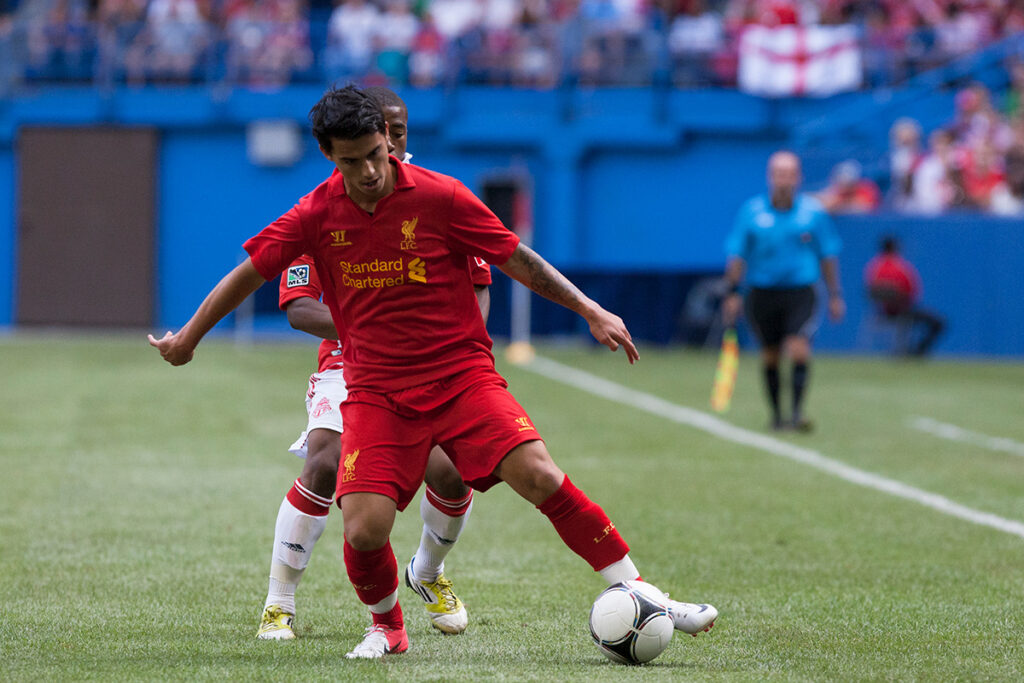
Climate Adaptation Science for Sports Turf
The Ontario climate presents some unique challenges for sports turf managers and sod growers alike! Winter temperatures typically range from -10°C to -15°C, and summer temperatures can reach upwards of 30°C. These massive temperature swings make growing anything somewhat difficult, especially if you want to be able to maintain it for the majority of the growing season. A typical Ontario growing season can be anywhere from 180 days to 200 days annually. On average, Ontario fields receive between 800-900mm of precipitation annually, and the distribution is uneven. High performance turfgrass has to have drought resistance, while also having the ability to thrive in well-draining growing mediums. Our native soil is often mostly clay-based with a pH range of 6.0-7.5. External factors must also be taken into consideration, like salt exposure, UV intensity, and the drying effect of high winds.
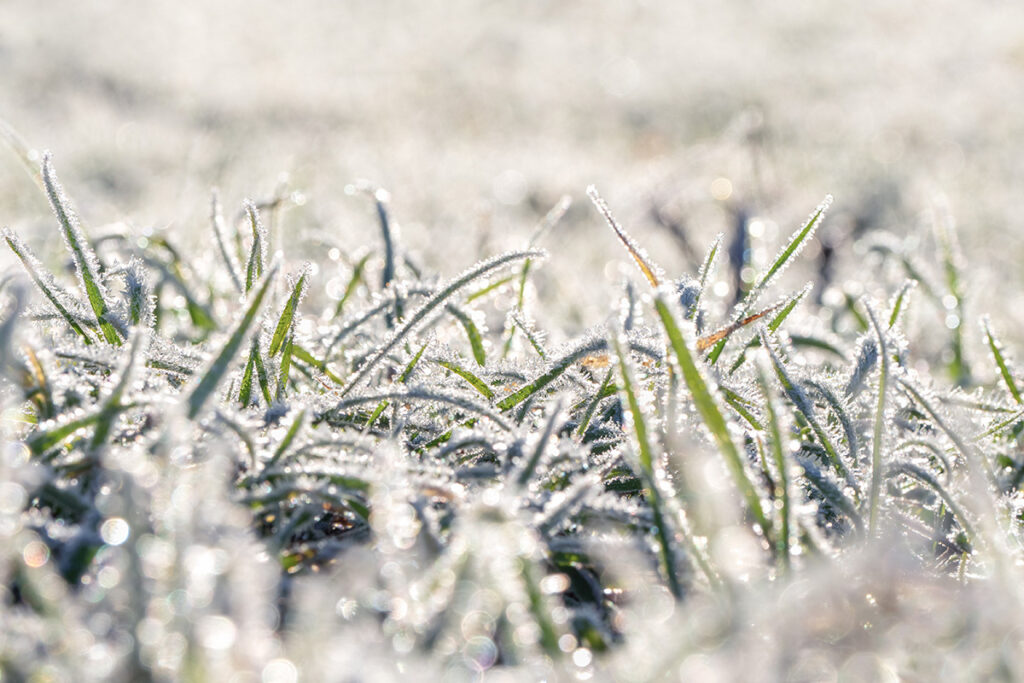
To ensure that the selected cultivars for our Ultimate Sports Turf will thrive in the highly-variable Ontario Climate, we’ve conducted numerous field trials in conjunction with the University of Guelph. We’ve carried out controlled stress testing procedures over many years to refine our Ultimate Sports Turf blend. We evaluated several turfgrass varieties on cold tolerance, drought tolerance, disease resistance, winter survival rate, spring green-up timing, and seasonal transition adaptations, among many other performance indicators. Modern biological technology allows us to identify specific genetic markers that indicate improved turfgrass performance across all these metrics, and then we put those selected varieties to the test.
Kentucky Bluegrass – The Champion’s Choice
Botanical Science Breakdown of GHG Ultimate Sports Turf
Here at Greenhorizons, we’ve been growing Ontario’s finest Kentucky Bluegrass since 1975. In 50 years of turfgrass cultivation, we’ve refined our processes, and our Ultimate Sports Turf is one of our most advanced varieties to date. Kentucky Bluegrass is unique among many other turfgrass cultivars in that it has what’s called “rhizomatous growth”. Stolons and rhizomes are specialized stems that function for horizontal growth. Stolons grow above the soil while rhizomes grow below. This horizontal growth enables Kentucky Bluegrass to be self-repairing. It dramatically improves field durability, especially in fields that are subject to high traffic stress.
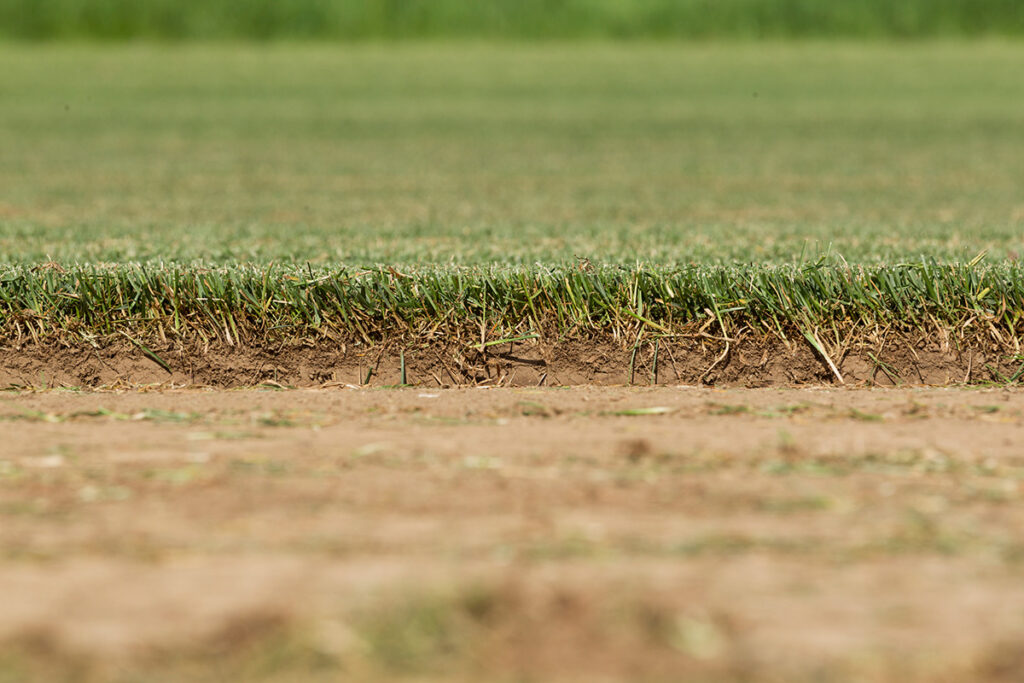
Rhizomatous growth also contributes to winter survivability. The rhizome buds are protected by the upper soil layer, and they can remain inactive for months. In contrast to surface shoots common in many turfgrass varieties, rhizomes are protected from the harsh winter conditions. The rhizomes act as an underground survival network to ensure high winter survival rates.
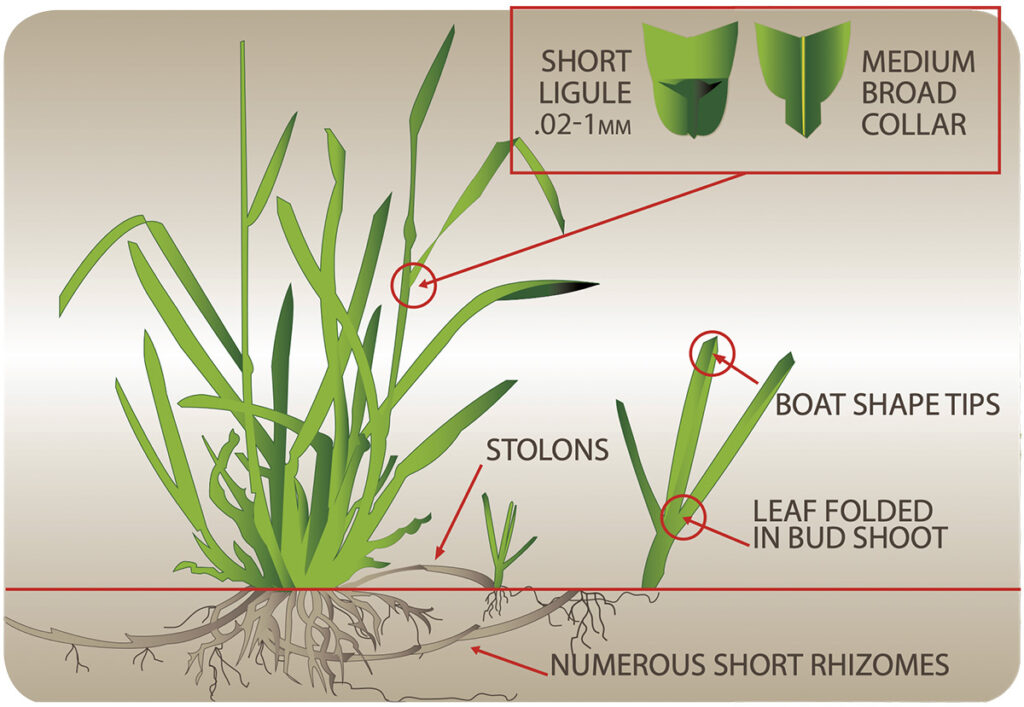
The above graphic shows many of the morphological features of our Ultimate Sports Turf, including the stolons and rhizomes. If you’re not an agronomist, most of it might seem like gibberish, but let’s break down the benefits of all these features!
Boat-Shaped Leaf Tips
The tips of the grass blades in our Ultimate Sports Turf form a distinctive shape, similar to the bow of a boat. Also known as a “prow-shape” in botanical literature, these rounded, tapered tips are unique among turfgrasses. Many other grass varieties form pointed tips. This “boat” shape results from the way the leaf edges curve and come together at the tip.
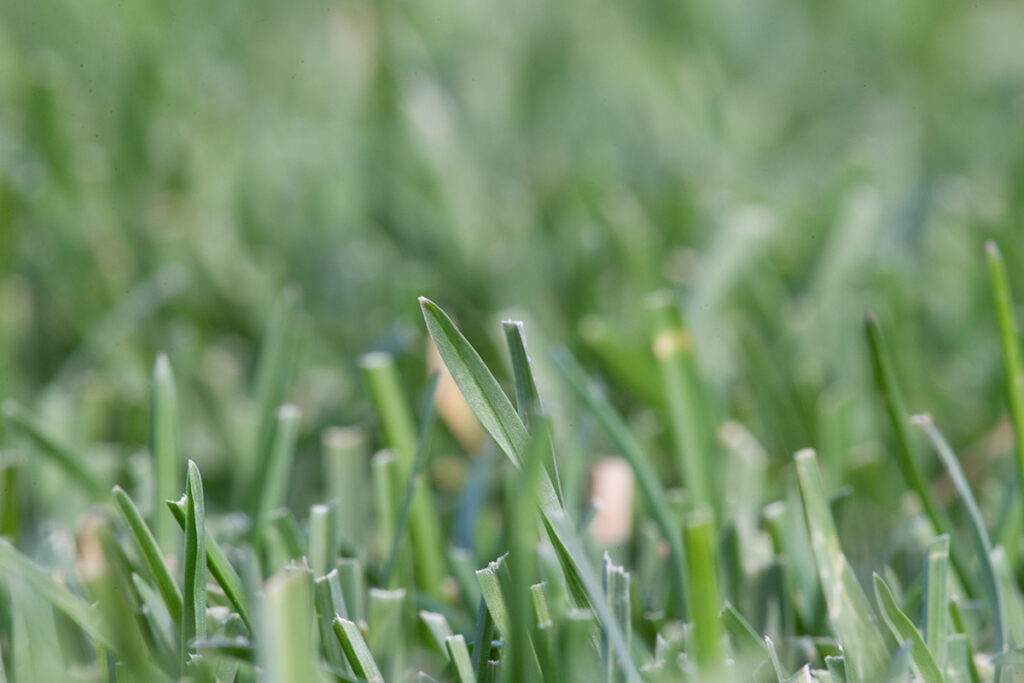
So what’s the advantage of this kind of tip shape? It minimizes tearing and fraying when the turf is subjected to foot traffic, equipment, and ball impact. Sharp pointed tips will split and tear when subjected to the same stresses, which can create entry points for disease pathogens. It’s also an aerodynamic shape, which helps to reduce wind resistance, preventing leaf damage in high winds. This boat-shaped structure also allows for more uniform healing and regrowth when compared to the jagged leaf tears in more pointed leaf-shaped cultivars. The consistent round tips also create a uniform texture across the whole field, contributing to the perfectly green aesthetic that all field managers dream of.
Folded Leaf Buds in Ultimate Sports Turf
As Greenhorizons Ultimate Sports Turf grows, new leaves start from the growing point in a folded configuration. This results in a creased leaf that forms a V-shape when looking at the grass blade from the top. This characteristic folded shape (known as “conduplicate vernation”) continues until the leaf is fully expanded.
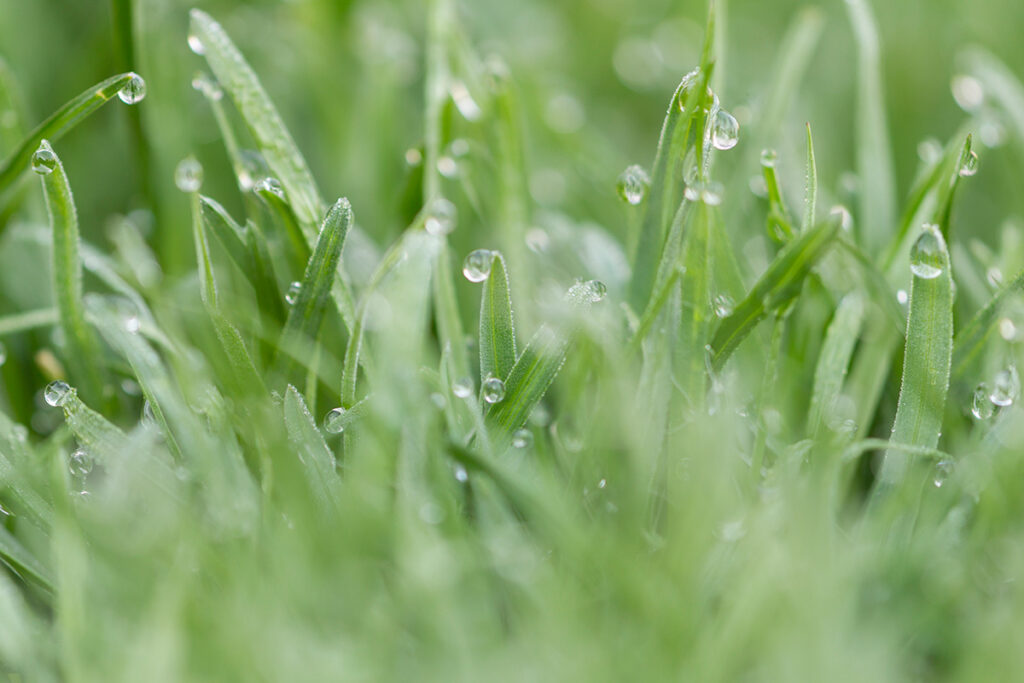
This folded structure protects the fragile new leaf growth as it pushes upward through existing thatch and soil debris. Imagine trying to push a sheet of paper into your lawn. Unfolded, the paper is flimsy and easy to tear. But if you fold that same sheet of paper, it becomes more rigid and resilient. This same concept is why folded leaf buds are beneficial in our Ultimate Sports Turf. Surprisingly, these folded leaf buds also require less energy than their “rolled” emerging counterparts. This allows for faster establishment and less downtime when installing a new playing surface. Not only is the establishment of new growth faster, it’s also more resilient to traffic when it’s growing in this folded configuration. So as your field is self-repairing, the new growth will have similar traffic resilience to the fully grown grass blades in the rest of your field.
Medium-Broad Collar Structure
In turfgrass, the collar is the light-coloured band located at the meeting point of the leaf blade and the leaf sheath. Particularly in Kentucky Bluegrass, this collar is uniquely broad when compared to fine fescues, but narrower than tall fescues. Within the collar, there are specialized transition tissues that form a connection between the vertical sheath and the horizontal blade.
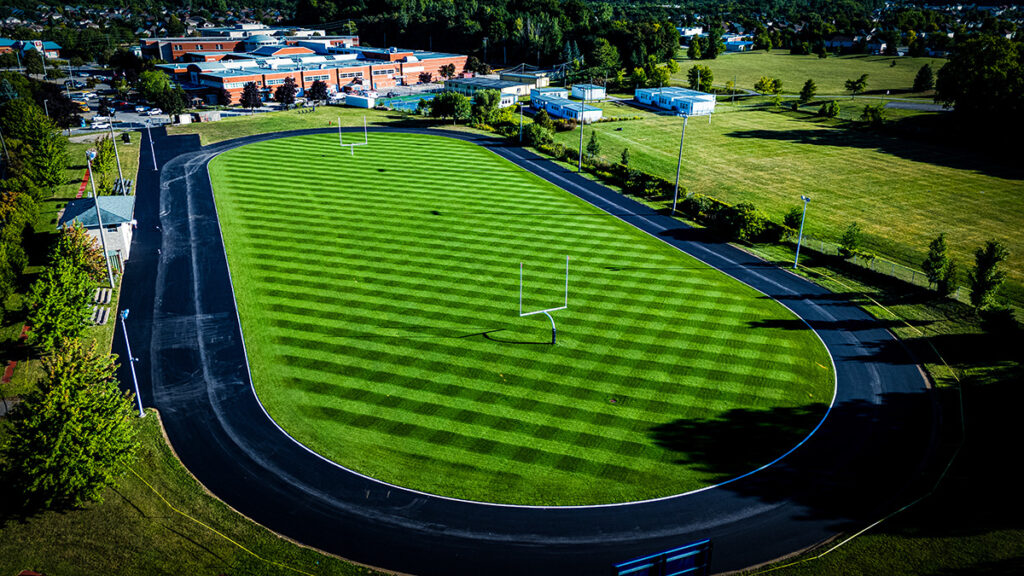
This medium-broad collar structure acts as a hinge point, allowing the leaf blade to bend and flex when subjected to traffic. It prevents snapping and makes the plant significantly more resilient. The collar of turfgrass also contains vascular bundles that improve water and nutrient mobility between the root system and the leaf blades. This effective collar structure helps prevent pathogen entry as well! In other turfgrass species, the collar can be a weak point that diseases will target. Also, when traffic damage occurs, the collar region is made up of self-repairing tissues that can initiate the repair process.
Short Ligule in Ultimate Sports Turf
The ligule is a membranous structure located near the collar. In many Kentucky Bluegrass cultivars, the ligule typically measures 1-2mm in length with a cut-off appearance. In our Ultimate Sports Turf, the ligule is comparatively short. It has a thin, translucent membrane texture.

Ligules help to prevent soil, water, and other organic debris from entering the leaf sheath. It’s sort of like a seal for the plant. If foreign debris is allowed to enter the sheath, turf can end up with diseases or inhibited growth. Ligules also help maintain an effective angle between the grass blade and the sheath, which contributes to the overall plant structure that maximizes photosynthesis while maintaining traffic tolerance. This short ligule is also a key species identifier, indicating to turf managers that they’re working with authentic Kentucky Bluegrass as opposed to inferior substitutes.
The Integrated Advantage of Greenhorizons Ultimate Sports Turf
All of these morphological features work together to create superior sports turf performance. Across metrics like traffic resilience, recovery speed, disease resistance, and aesthetics, our Ultimate Sports Turf outperforms the alternatives. In fact, these features work so well together, you might think they were engineered! And that’s because they were. Greenhorizons Ultimate Sports Turf is the result of decades of breeding and selection, where every structural feature has been optimized for the demanding requirements of Ontario sports fields.
We know that return on investment is ultimately the deciding factor when selecting the kind of playing surface to implement. Choosing Greenhorizons Ultimate Sports Turf will result in reduced maintenance requirements, extended field lifespan, and lower injury-related liability. Countless Ontario field managers have already made the change to Ultimate Sports Turf, and they’re reaping the benefits.
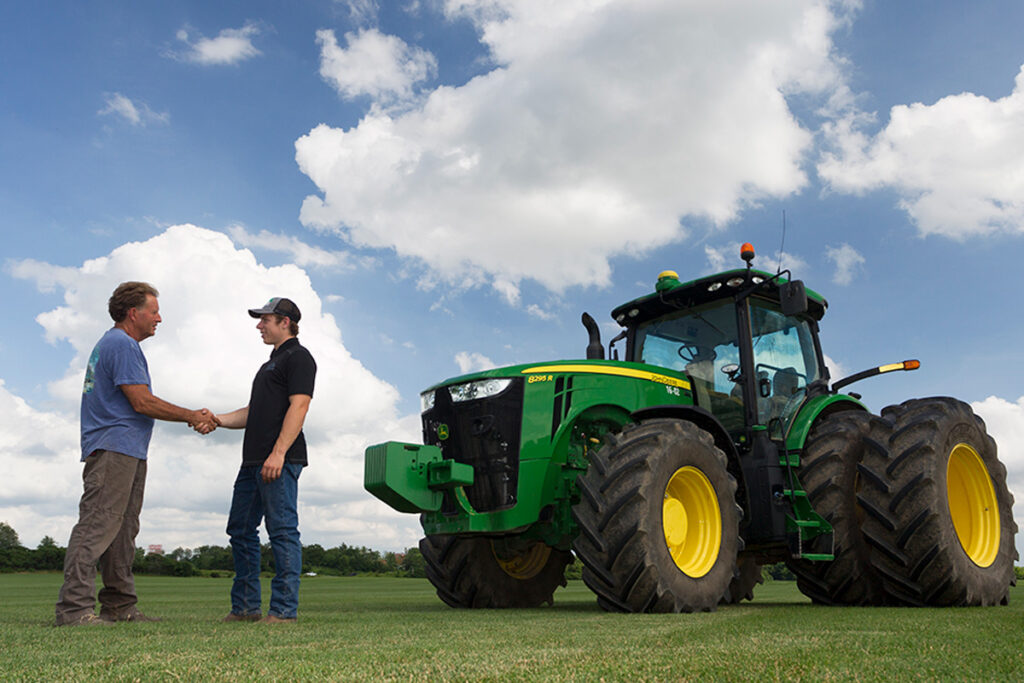
The Future of Sports Turf
Here at Greenhorizons, we’re truly on the cutting edge of turfgrass technology. We put the time, money, and effort into ensuring natural turfgrass continues to be the premier sports playing surface. Our Ultimate Sports Turf is the culmination of our extensive turf growing experience and years of research from accredited organizations. Ready to experience the difference that research-backed turf technology makes? Contact our turf specialists for a field assessment and customized recommendations for your specific requirements.
